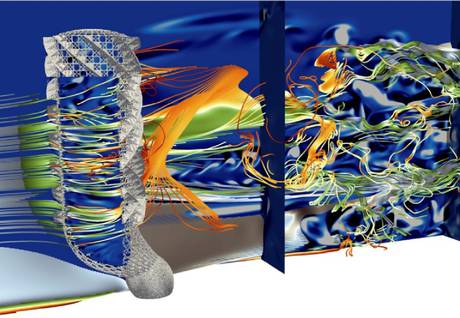From the secrets of the glass sponges', organisms that live in the abyss, come potential applications for the design of future innovative airplanes, boats and skyscrapers: the study published in the journal Nature by an international research group led by Giacomo Falcucci of the University of Rome Tor Vergata, with Sauro Succi of the Italian Institute of Technology (Iit) and Maurizio Porfiri of the Tandon School of Engineering of New York University.
For the first time, the hydrodynamic characteristics of these organisms were analyzed thanks to simulations made with one of the most powerful supercomputers in the world, Cineca's Marconi 100. For Italy, the University of Tuscia also participated in the research
"The marine sponges Euplectella aspergillum, also known as Venus baskets, are very interesting organisms that live anchored in the ocean floor and build a sort of glass skeleton, using silica, which contrary to what one might expect is particularly resistant", Falcucci told ANSA.
“So far - he continued - many studies had studied their resistance, but we have analyzed for the first time their hydrodynamic characteristics, that is how they manage to resist water currents”.
Representation of the hydrodynamic field inside and outside the structure of the Euplectella aspergillum sponge, reconstructed thanks to the Cineca supercomputers (source: G., Falcucci, University of Rome Tor Vergata)
Thus something unexpected emerged: thanks to the system of holes and ridges that characterize the skeleton, the Baskets of Venus are able to reduce the resistance with water, that is, they are able to make it flow, greatly limiting the friction and generating inside the basket a more effective recirculation to filter the water and facilitate the exchange of gametes during reproduction periods. “Very interesting characteristics which, we are sure, will now be able to find applications in the design of new materials and schemes in boats, airplanes or skyscrapers,” noted Falcucci.
In practice, in all structures that in one way or another have to reduce their resistance to a fluid, water or air. To reach these conclusions it took years of study necessary to develop the codes for the software simulation of these complex structures and months of work for the powerful Marconi 100 supercomputer at Cineca, capable of performing almost 32 million billion calculations per second.



/cloudfront-eu-central-1.images.arcpublishing.com/prisa/FPM2IKJUNFGWPPZIRZ52BX74EU.jpg)




